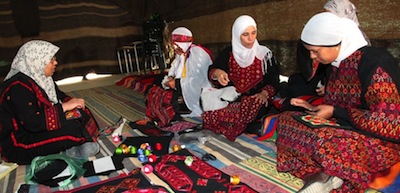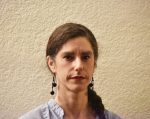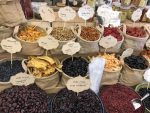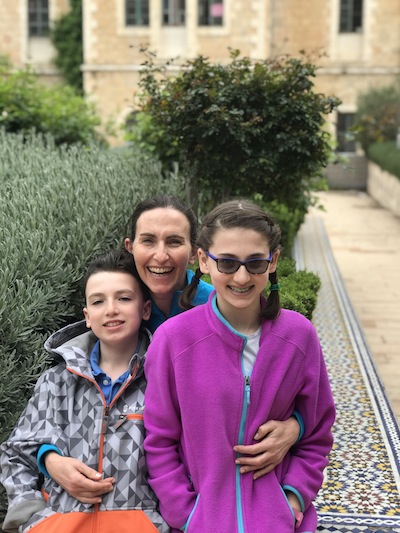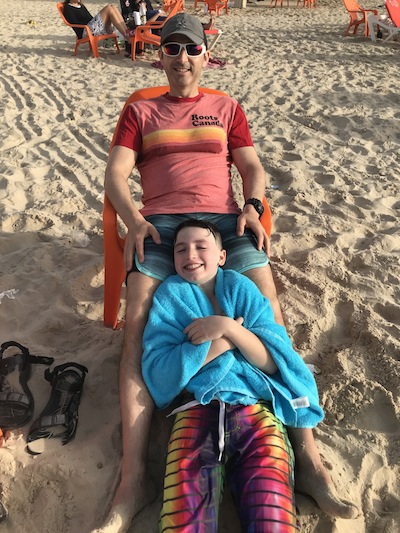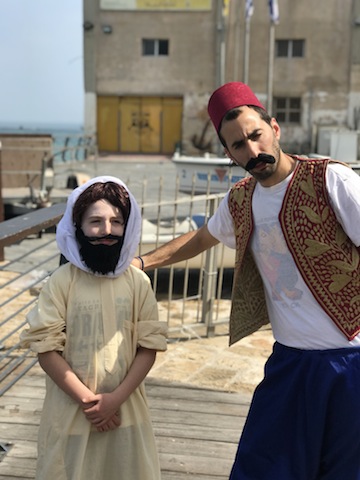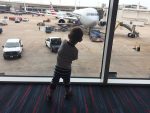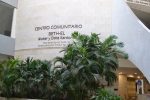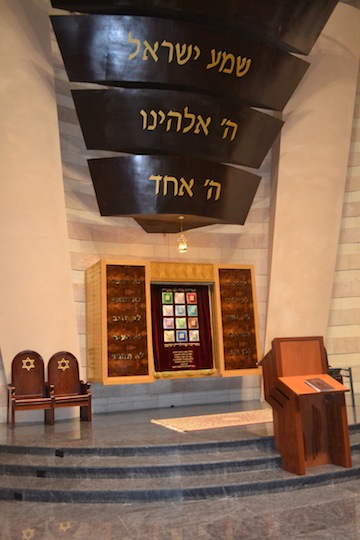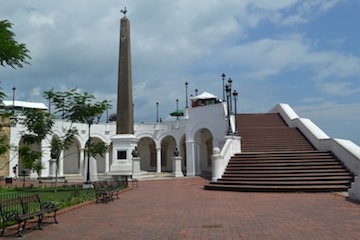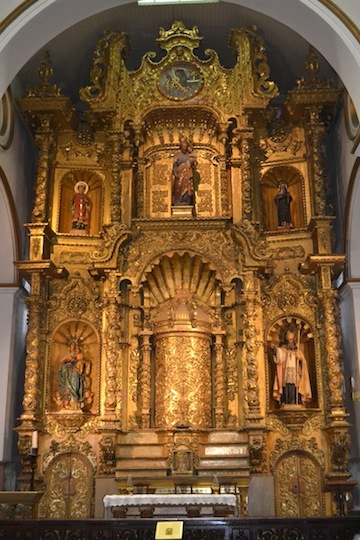Naomi Steinberg has toured the world with Goosefeather and is now working on a book of her travels. (photo from Naomi Steinberg)
Naomi Steinberg’s Goosefeather started in 2011. “It began with interviewing my French maternal grandfather in Paris before he died,” she said. “I wanted to know how he had helped my Jewish grandmother survive the Second World War and why he was a collector of maps, weights and scales. Given his work with the metric system, I also thought it would be interesting for us to talk about measurements in general.”
Fascinated by her grandfather’s story, the kernel of Goosefeather was born. “I made him a promise that he would see the final result,” she said.
She immersed herself in research. “Measurements are extremely important to humans,” she said. “We measure everything, but we have to realize that no measurement is 100% accurate; we have to accept that…. As I went deeper into it, I wanted to know how we measure the truth. What is the truth? What is reality? Same as when measuring length and weight, measuring reality can’t be 100% accurate. We have to accept this area of the unknown. We have to let ourselves ‘not know.’ We have to let everyone just be.”
The show that emerged out of her research is a multifaceted tale involving maps of places and relationships, measurements of physical elements and of abstract concepts. “How should we measure the space between me and another person? Between me and the planet?” she asked herself. “It soon became clear not only that I had a complicated story to tell, I also had an entertaining show that wanted to be on the road…. Goosefeather was going adventuring and I would be going around the planet, by land and sea, carrying a performance with me. As I journeyed, I would be carrying my own prime meridian in the form of presence. I had hypothesized that if, with this, I charted the space-time between myself and others, I might be guided in a good way.”
As the show was still coming into form, Steinberg’s grandfather was dying in a hospice in France. In 2013, she visited him in the hospice one last time and showed him the first draft of Goosefeather. “I shared with him all my ideas, and he said I got it ‘correctly.’ For a man obsessed with measurements, that was a high praise.”
The first performance of Goosefeather occurred in 2014 in Vancouver. (For a short review, see jewishindependent.ca/storytellers-excel-at-fringe.) But Steinberg needed to take it on the road. “I knew the show should travel like a Canada goose, all around the world,” she said. “I love traveling. I have a nomad soul, and I value my experience as a traveler, but I care very much about the environment. I didn’t want to just take a plane. You don’t experience your travels fully when you fly. It should be closer to the ground, slower, so I could stop and perform.”
In November 2014, she left Vancouver for California, where she boarded a cargo ship heading to Australia, which started her journey around the world. “It was easy,” she said. “The cargo companies sell tickets. They often have a couple cabins vacant – an owner’s cabin and a pilot’s cabin. That’s where I stayed on the cargo ships.”
She also performed Goosefeather on the first ship, as a Christmas gift for the sailors. When the captain asked her for a repeat performance, she bartered: a show for a phone call to her father, who celebrated his birthday while she was on the water.
It took her 21 days to reach Australia. From there, she took another cargo ship to China. Her further travels – by boat, bus and train – included Japan, Russia, Belgium, France, Switzerland, the United States and, finally, back to Canada. The entire trip took 382 days.
In every country, she performed Goosefeather, facilitated workshops and participated in creative collaborations. In every country, she stayed with friends. “I came back with $100. I lived in a cash economy for over a year and I fully supported my journey with my shows and workshops,” she said. “In the entire time I was away from home, I only paid for a hotel for seven nights.”
Despite the crazy itinerary, she didn’t prepare all her stops beforehand. “Sometimes, I didn’t even know where I would spend the night when I arrived in a city or a country, but I always found friends,” she said. “I researched storytelling organizations on the internet. I put my scheduled countries on my Facebook page and asked my friends for help. They asked their friends, and the word spread around the world like a goose feather. Everywhere, people wanted to see my show. I got contacts in every city and country. Everywhere, people wanted to help.”
Even the language barrier in countries like Japan and Russia didn’t deter Steinberg. She can perform Goosefeather in either English or French, and she always found a translator when she needed one.
“In Japan, they asked me to perform for children, and I created a special show for them: a Kamishibai show.”
For Steinberg, a professional storyteller, a storytelling tradition like Kamishibai is extremely compelling. According to Wikipedia, “Kamishibai is a form of Japanese street theatre and storytelling popular during the Depression years and the postwar period … until the advent of television.” Storytellers would travel from town to town, performing on “street corners with sets of illustrated boards … narrat[ing] the story by changing each image.” Some consider Kamishibai to have influenced manga and anime.
“For my first Kamishibai show, the adventures of a little goose feather, a talented 8-year-old drew the illustrations,” said Steinberg. “It was a big success. Now, I perform it with the pictures created by a wonderful Japanese artist, Shiho Oshita Beday.”
Currently, Steinberg is busy writing a book, a travelogue of her journey around the world with Goosefeather. She aims to publish it next year. To learn more, visit goosefeather.ca.
Olga Livshin is a Vancouver freelance writer. She can be reached at olgagodim@gmail.com.
****
Note: This article has been edited to reflect that Steinberg’s total journey took 382 and not 386 days.



